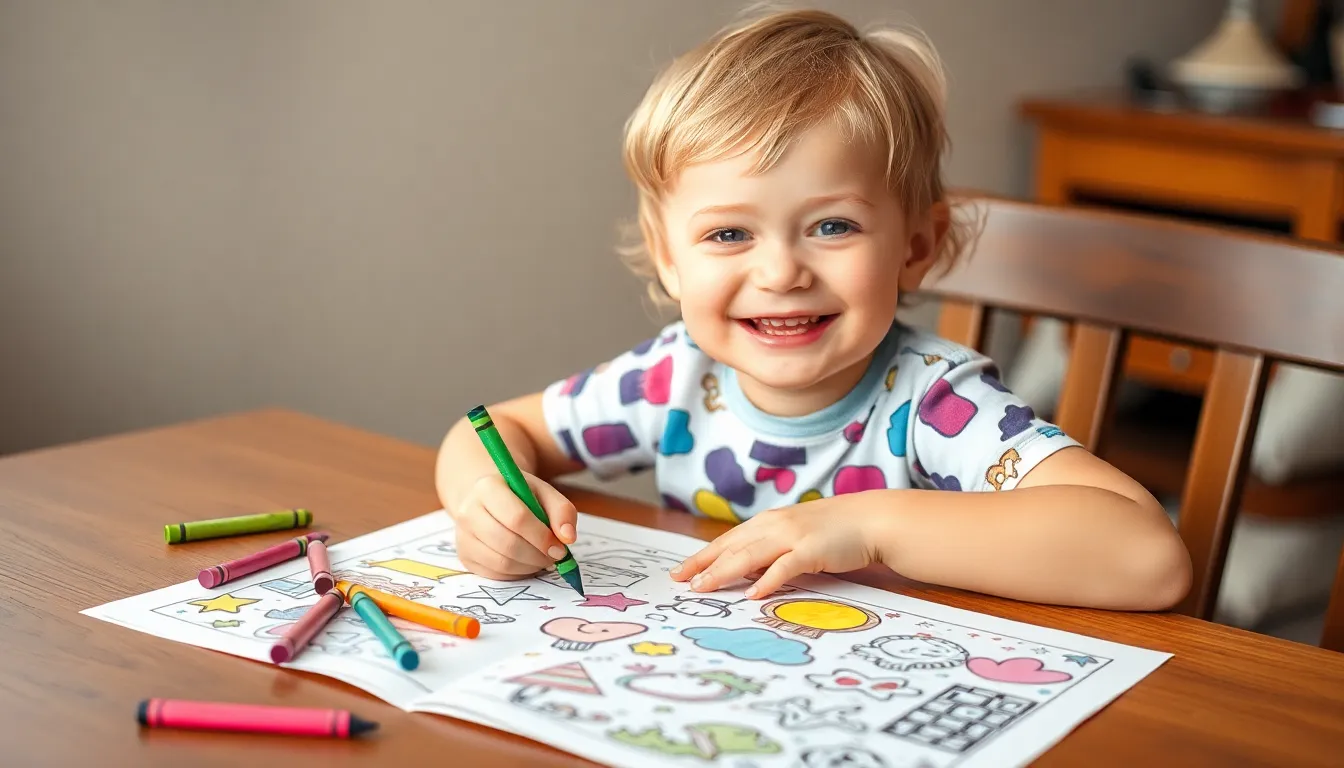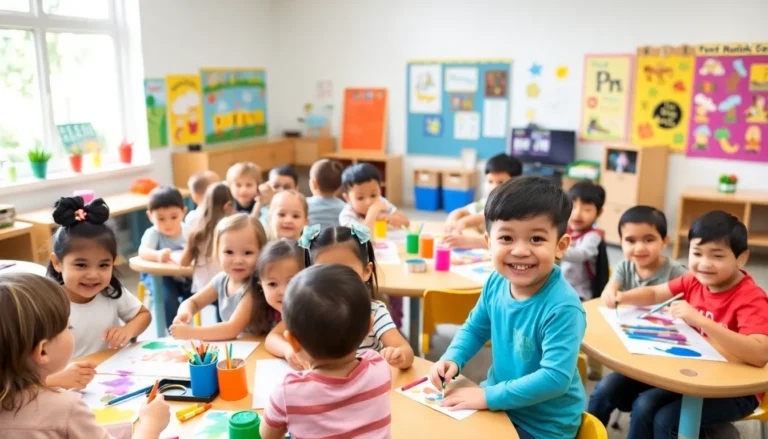Table of Contents
ToggleDrawing isn’t just about putting pencil to paper; it’s a magical journey where kids unleash their creativity and express themselves. Imagine a world where a simple doodle can transform into a dinosaur or a rocket ship! For children, drawing is like having a superpower, allowing them to communicate their wildest dreams and ideas without saying a word.
Benefits Of Drawing For Kids
Drawing fosters a variety of benefits for children. It enhances their development in numerous ways.
Enhances Creativity
Creativity flourishes through drawing. When kids express themselves on paper, they generate original ideas. Engaging in drawing activities encourages imaginative thinking. Colors, shapes, and characters emerge from their minds, leading to unique art pieces. Children explore new concepts while conveying their thoughts visually. This process nurtures confidence in their creative abilities, allowing them to experiment with different styles. Exposure to diverse artistic techniques broadens their horizons and supports open-mindedness. Overall, drawing serves as a powerful tool for developing creativity in young minds.
Improves Fine Motor Skills
Fine motor skills benefit significantly from drawing. As children grip crayons or pencils, they train their hand muscles. This coordination enhances their ability to control movements, creating precise lines and shapes. Practicing different strokes and patterns builds dexterity over time. Using various drawing tools introduces them to a range of textures, further refining their skills. Engaging in regular drawing also contributes to better writing abilities and hand-eye coordination. Children develop essential skills that assist them in daily tasks and improve their overall motor control.
Different Drawing Techniques

Drawing encompasses various techniques that enhance creativity and skill. Kids can explore these methods to express themselves in unique ways.
Coloring
Coloring allows children to add vibrancy to their drawings. They use crayons, markers, or colored pencils to fill in shapes and figures. This technique boosts creativity as kids choose colors that reflect their imagination. Experimentation is encouraged; blending or layering colors fosters a deeper understanding of color theory. Engaging in coloring also promotes concentration and patience, reinforcing fine motor skills. Many children find joy in coloring books, which provide designs and prompts that stimulate their artistic exploration.
Sketching
Sketching involves creating quick, simple drawings to capture ideas. Kids often use pencils or charcoal to outline images rapidly. This technique emphasizes spontaneity and freedom, allowing children to express thoughts without limitations. Encouragement in sketching helps them build confidence, as they realize imperfections contribute to their unique style. Practicing sketching enhances observation skills, as children learn to notice details in their surroundings. With each sketch, they can develop their visual language, transforming everyday scenes into artwork.
Recommended Supplies For Kids
Selecting the right supplies can enhance a child’s drawing experience significantly. These tools can inspire creativity and allow for seamless expression.
Pencils and Markers
Pencils and markers serve as essential drawing tools for children. Graphite pencils offer precision and control, making them ideal for sketching details. Colored markers, on the other hand, provide a bold, vibrant option for kids looking to add life to their artwork. Various tip sizes in markers can create different effects, helping kids develop their unique artistic styles. When choosing these tools, opting for non-toxic and washable options ensures safety and easy clean-up. Each tool contributes to enhancing fine motor skills, allowing children to practice varying pressures and techniques.
Drawing Paper
Quality drawing paper is crucial for delivering the best results in a child’s art projects. Different weights and textures cater to various drawing needs. Heavier paper stocks suit markers and watercolor, while lighter sheets work well with pencils and crayons. Acid-free paper preserves artwork for longer, preventing yellowing over time. Children may benefit from using sketchbooks to keep their creations organized in one place. When selecting drawing paper, consider the size that suits their creative space, encouraging them to explore artistic possibilities. Each page turns into a canvas for imagination, contributing to their overall growth in creative expression.
Drawing Activities To Try
Engaging in drawing activities sparks creativity and helps children refine their skills. Two popular methods are guided drawing and free drawing, each offering unique benefits.
Guided Drawing
Guided drawing involves step-by-step instructions, helping kids replicate specific images. This approach boosts confidence as they see their progress. Through guided sessions, children acquire essential techniques such as shape recognition and line control. Notable resources include online tutorials and drawing books that provide clear examples. Many kids enjoy drawing characters from their favorite shows, creating a fun learning experience. Incorporating guided activities in the routine promotes structure while allowing for creative expression.
Free Drawing
Free drawing allows children to explore their imagination without restrictions. With this method, kids can choose any subject, such as animals, fantasy worlds, or personal experiences. Encouraging free drawing supports self-expression and originality. It fosters innovation as children experiment with colors and styles. Providing a variety of materials enhances the experience, inviting them to use crayons, markers, or even pastels. Free drawing can evolve into a daily routine, nurturing artistic growth and building confidence through personal creations.
Drawing is an essential activity that nurtures creativity and self-expression in children. It not only serves as a medium for communication but also plays a vital role in developing fine motor skills and enhancing cognitive abilities. By engaging in various techniques such as coloring and sketching, kids can explore their artistic potential while building confidence in their unique styles.
Equipping children with the right tools and supplies can significantly enhance their drawing experience. Encouraging both guided and free drawing activities allows them to refine their skills and express their imagination freely. Ultimately, drawing is more than just an art form; it’s a powerful journey that fosters growth and creativity in young minds.







